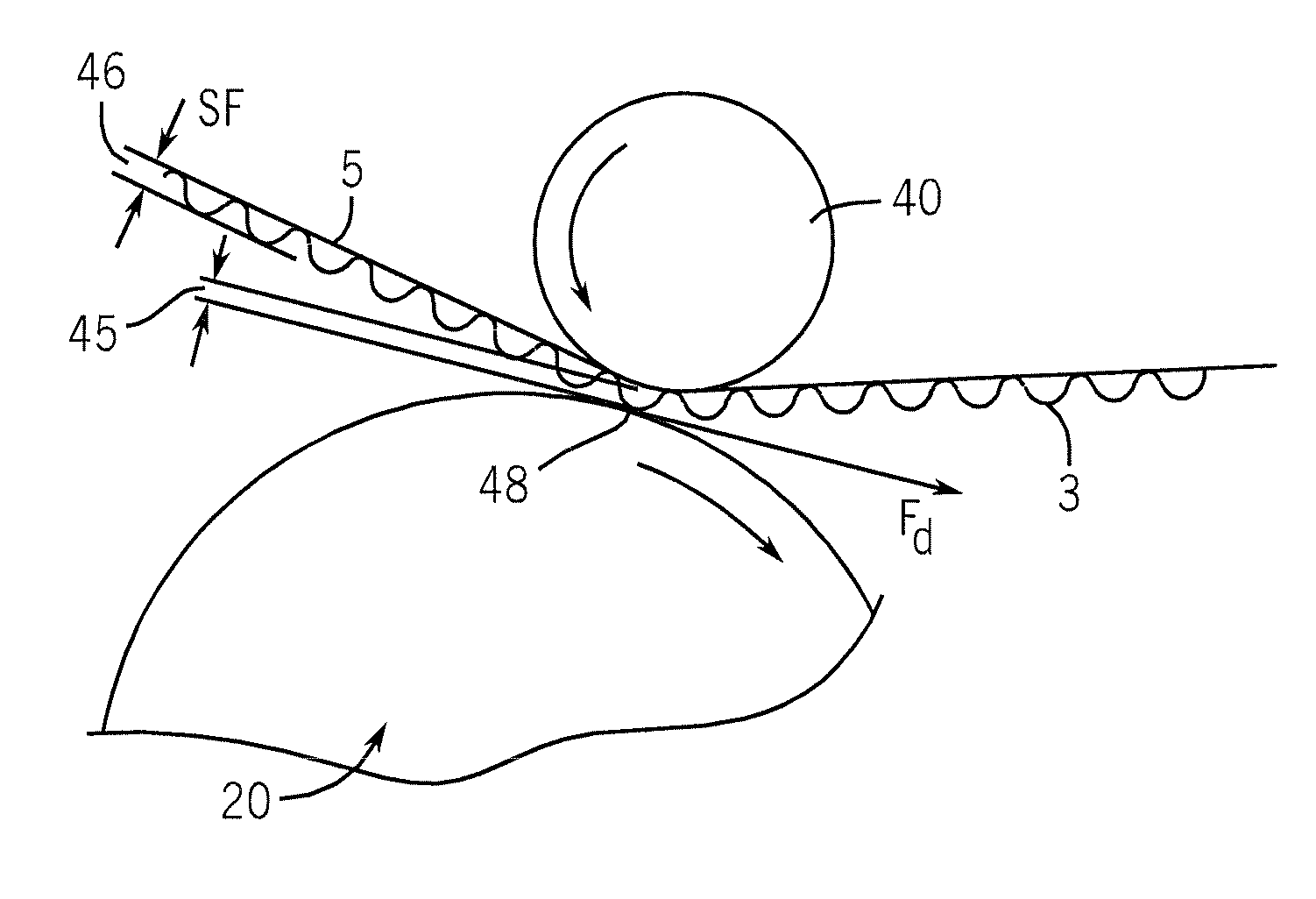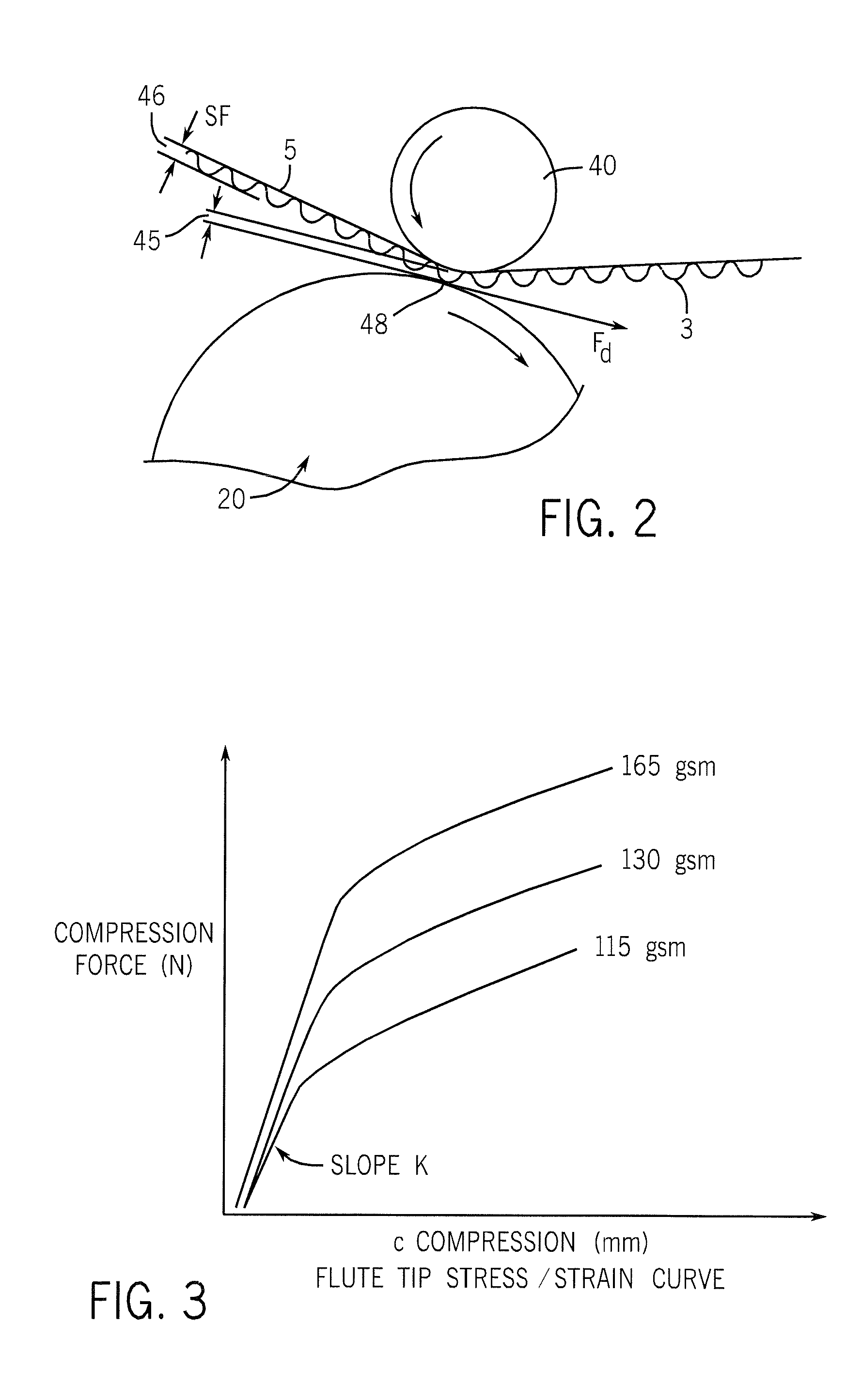Method for Automatic Setting of the Rider Roll/Glue Applicator Roll Gap on a Glue Machine
a technology of automatic setting and glue machine, which is applied in the direction of mechanical means, measuring tapes, instruments, etc., can solve the problems of blistering and undesirable exterior surface of corrugated boxes, singleface webs passing through this nip may pick up too little starch or no starch at all, and the effect of reducing the production cos
- Summary
- Abstract
- Description
- Claims
- Application Information
AI Technical Summary
Benefits of technology
Problems solved by technology
Method used
Image
Examples
Embodiment Construction
[0031]Primary and essential elements of a corrugated glue machine are shown in FIG. 1. The glue applicator roll 20 runs in a glue pan 25 where it picks up a layer of adhesive 35 that is then metered by a contra-rotating metering roll 30. It is understood by those skilled in the art that there are other means of metering the glue applicator roll glue film, for example the metering concept disclosed in U.S. Pat. No. 6,068,701.
[0032]The singleface web 5 comprised of a top liner 4 and a fluted medium 3 (See FIG. 1A) that has been adhered to the top liner on upstream corrugated machinery enters the glue machine 10 around idler roll 50. Idler roll 50 is positioned such that the singleface web takes a curved wrap around rider roll 40. It is important to position the idler roll to get significant wrap so that individual flute tips of the fluted medium 3 just dip into the metered adhesive 35 as will be discussed in more detail in the description of ensuing figures.
[0033]Rider roll 40 is atta...
PUM
| Property | Measurement | Unit |
|---|---|---|
| thickness | aaaaa | aaaaa |
| speed | aaaaa | aaaaa |
| drive current | aaaaa | aaaaa |
Abstract
Description
Claims
Application Information
 Login to View More
Login to View More - R&D Engineer
- R&D Manager
- IP Professional
- Industry Leading Data Capabilities
- Powerful AI technology
- Patent DNA Extraction
Browse by: Latest US Patents, China's latest patents, Technical Efficacy Thesaurus, Application Domain, Technology Topic, Popular Technical Reports.
© 2024 PatSnap. All rights reserved.Legal|Privacy policy|Modern Slavery Act Transparency Statement|Sitemap|About US| Contact US: help@patsnap.com










